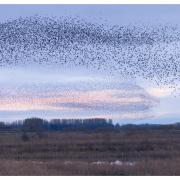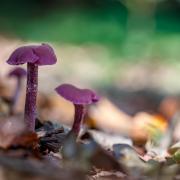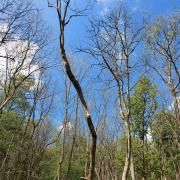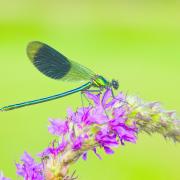Hetti Lawrence from the Yorkshire Wildlife Trust reveals some of the rarest species of wildlife to look out for in the county.

We're so lucky to play host to such a wide variety of exquisite wildlife in Yorkshire - from insects scurrying through the grass to dolphins dancing through the waves, we're a county with it all. But not only are we rich in wildlife, we also have several very rare species making appearances.
Take the crucifix ground beetle, a relatively small nocturnal beast that was made famous by Charles Darwin, who attempted to store one in his mouth when he ran out of sampling pots whilst out collecting. It is around 8mm in length, largely black and rather bristly. It has similar colouration (black with red spots) to the much larger common sexton beetle, but is much rarer. Within Yorkshire there have only been three recorded sightings, two of which were at Yorkshire Wildlife Trust nature reserves Wheldrake Ings, near York and Carr Lodge in Doncaster. Because it is so rare, little is known about its exact habitat requirements, so the fact it was found in these particular reserves gives us valuable information about its preferred habitat condition and quality.
Pine martens belong to the same family as badgers, otters, stoats and weasels. They are the size of a domestic cat with large rounded ears, chestnut coloured fur and a lighter creamy coloured chest. They are superb climbers and can often be spotted up in trees. They have a varied diet of berries, insects and other small mammals.
They were once widespread across much of the UK, but large scale deforestation and intensive predator control led to them becoming extremely rare in England and even considered locally extinct in most areas. By the turn of the 20th century they had become limited to Northern Scotland and a few small pockets in Wales and Northern England.

They are now considered to be the one of the UK's rarest mammals. Until recently, the pine marten was thought to have become extinct in Yorkshire too, with the last confirmed sighting having been in the 1980s. However, at the close of a four-year project on the North York Moors, one was finally caught on a trail camera in a remote Forestry Commission plantation in 2017 - it was the first sighting in more than 35 years.
The striking black markings on a male bearded tit (which actually look more like a rather splendid moustache than a beard) give these rare birds their name. Though rare, they are noisy and sociable, so if they are around you will know it - their loud 'ping' call will announce their presence. They are mainly found in large reedbeds where they feed on insects and build their nests low down among the reeds, often on piles of dead reed stems.
This year, for the first time in its 51-year history, a breeding pair of bearded tits were recorded at Potteric Carr nature reserve in Doncaster. The pair were seen with nesting materials, and then up to three baby birds were seen with their parents in the reedbeds later in the year.
The striking death's head hawkmoth is fairly large with a wingspan of approximately 80-120 mm. It is named for the vaguely skull-shaped pattern on its back. Though it enjoys a somewhat celebrity status for a moth (it appears in the films The Silence of the Lambs and the 1958 Dracula starring Peter Cushing) it is actually a very rare species in the UK.

Very few sightings have been made in Yorkshire, but just this year a death's head hawkmoth was found by visitors at our Spurn National Nature Reserve, near Hull. This is a huge record for Yorkshire and a first for Spurn - both staff and visitors were delighted to have such a unique visitor.
As rare as these species currently are, they are set to become even rarer. A whole host of obstacles from habitat loss to climate change are currently affecting the majority of our wildlife, and these fragile visitors are likely to be the first to disappear altogether if these trends continue. If you want to help species like these survive and even thrive in Yorkshire and beyond, consider joining Yorkshire Wildlife Trust as a member. It is only through your support that we can protect, restore and campaign for our wildlife and wild places.



























